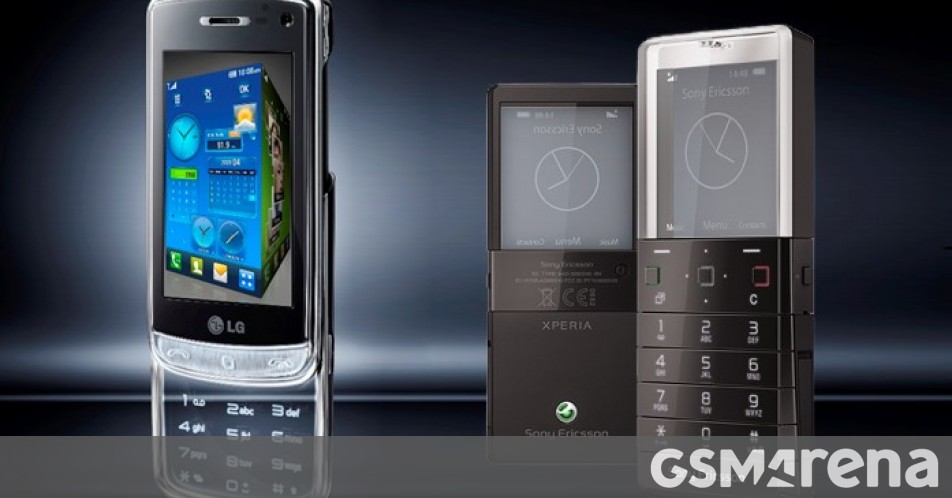
It may be a sci-fi staple – people working advanced computers with transparent screens – but such computers really do exist. We saw one at the MWC last week, the Lenovo concept laptop. This was never the most practical design, but it sure looks cool. And phone makers thought so too.
A long time ago (it has been 15 years!) the LG GD900 Crystal was announced. It was a slider phone with a 3.0” touchscreen and, more importantly, a transparent keypad. This didn’t have keys as such, it was more of a touchscreen without the screen – just a transparent glass with cool white illumination and a capacitive touch layer.



The LG GD900 Crystal had a transparent slide-out keypad
The effect worked best in the dark when the hazy glow of the keypad really made it look like a crystal. It’s also a bit of a missed opportunity as, looks aside, this was just a keypad – LG could have enabled some navigation gestures.
With just a 3” display, your thumb covered up most of the content while scrolling. The touchscreen did support multi-touch with pinch zoom, so some gestures on the touchpad/keypad would have been cool.
A few months after the Crystal came the Sony Ericsson Xperia Pureness. Despite the name, this was not a smartphone, but it did have a unique trick – a transparent display. It sounds more impressive on paper than it was in reality.
The display was indeed transparent, but it was a tiny 1.8” monochrome display panel and it was very difficult to use. As you can see, we mostly photographed it on a background as otherwise ambient light made it quite illegible. And this tiny monochrome display made any smart functionality a non-starter. Functionality was so limited that the Pureness didn’t even have a camera.
Keep in mind that this was a premium €600 phone! What it did have was a subscription to a concierge service, similar to Vertu phones (though the Xperia’s plasticy build wasn’t as appealing to rich folk as the precious materials of the Vertus). And while it looked unique and was certainly a conversation starter, the Pureness was quite underwhelming.
Around a year later a rival arrived – the Lenovo S800. This was similar to the Xperia with a transparent display over a traditional keypad, though this one was larger at 2.4”. It was still monochrome, though.
There have been some concept devices too. For example, Iron Man 2 featured a fictional LG phone that was all transparent touchscreen, save for a thin frame around the glass. This was just a practical prop with CGI graphics, of course.

Tony Stark’s transparent LG phone
Here’s another odd one – the Mobiado and Aston Martin CTP002 concept device. This was a transparent Android phone with all the electronics stuffed in the side edges of the device.



The Mobiado CTP002 concept Android phone with Aston Martin
Making a transparent display is not that difficult – in fact, LCDs are naturally transparent, just remove the backlight and you can see right through it. OLED is transparent too, that is how under display fingerprint readers and cameras work. The capacitive touch layer is transparent as well.
That doesn’t mean that there are no challenges – the motherboard and battery certainly aren’t transparent. That is why LG and Sony Ericsson limited the transparent window to a section of the phone, moving the opaque components out of the way. And despite a few claims to the contrary, no one actually managed to build a transparent all-touch smartphone.
There’s also the other issue – a transparent display is hard to read, unless you put a plain background behind it, but that defeats the purpose. Maybe dimmable glass like we saw on the OnePlus Concept One could provide an opaque background when needed and then go transparent to look cool.
For an actual such display, check out the Xreal Air 2 Pro – a pair of XR glasses that have a transparent screen for AR, but an electrochromic window can become opaque for VR.

Xreal Air 2 Pro at 100%, 65% and 0% transparency
What do you think of transparent phones – a short-lived design fad or were those phones just ahead of their time? Well, ahead of what technology of the time could achieve.












